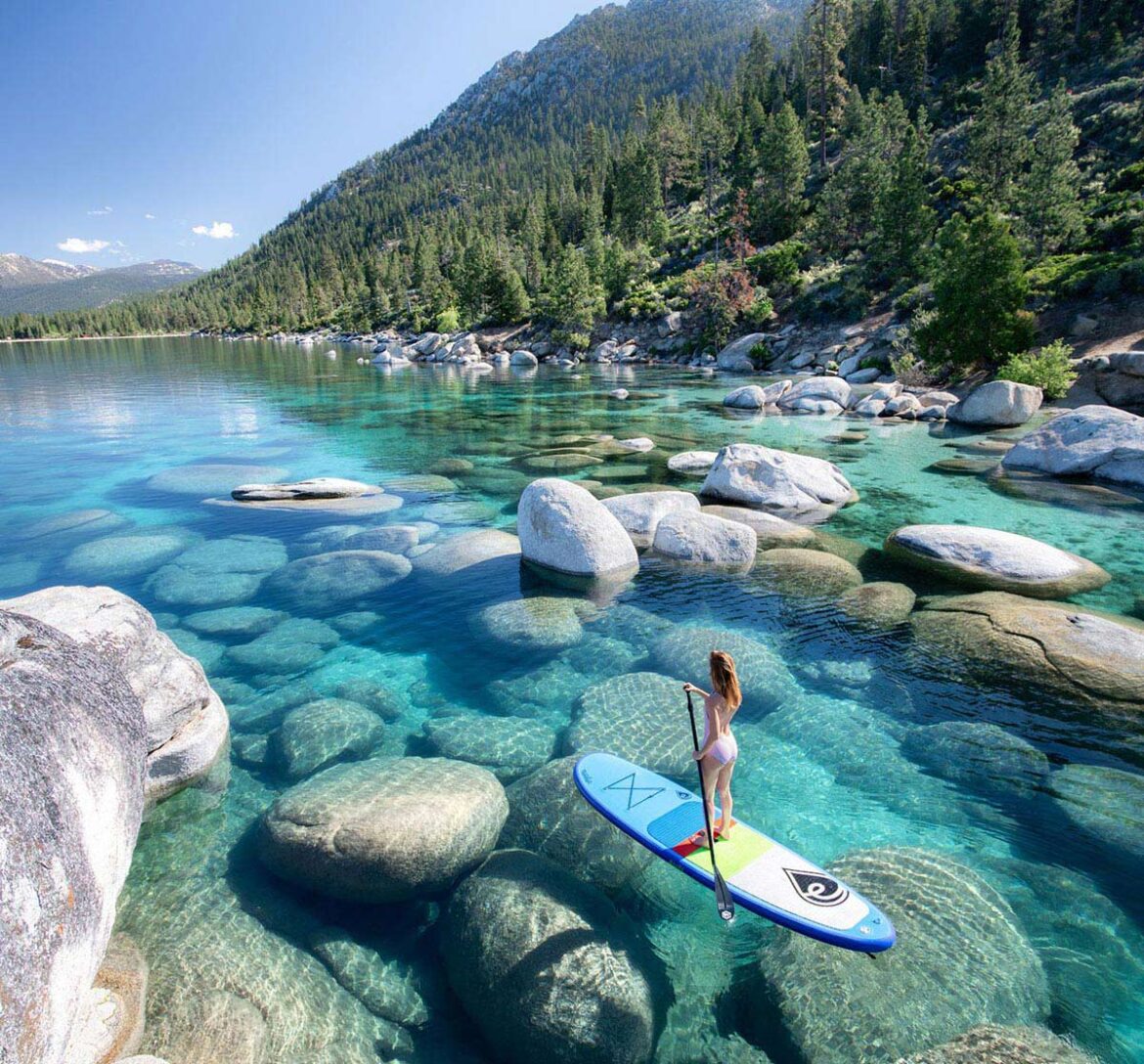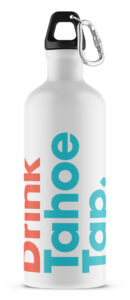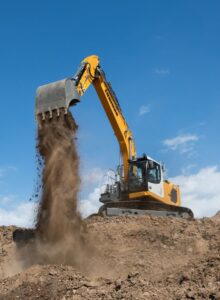Lake Tahoe, located in the Lake Tahoe Basin which spans California and Nevada, is one of the largest (largest Alpine lake in North America), deepest (6,223 ft), and clearest lakes in the world.
It is so clear in fact that many communities around Tahoe take their tap water right from Lake Tahoe.
Tahoe Tap
Tahoe water (or “Tahoe Tap”) is recognized as being among the best water in the world. When you turn the tap on your sink, the water that comes out of the faucet is not only cleaner, safer and healthier than bottled water, but it is also much better for the environment.
Tahoe Tap is so pure that a number of the Tahoe Water Suppliers Association members are exempt from having to provide filtration to it before providing it as drinking water in the Basin.
Preservation and Restoration
Lake Tahoe and the surrounding basin are part of a highly complex biophysical and social environment. The challenges posed by its restoration and continued management for multiple benefits are paralleled by few places in the world. Restoration and management of the Basin’s ecosystem have required the sustained engagement of federal, state, and local governments, and the private sector.
TRPA
In order to preserve, restore, and enhance the unique natural and human environment of the Lake Tahoe Region, while improving local communities and people’s interactions with its irreplaceable environment, an organization called the TRPA (Tahoe Regional Planning Association) was founded. Started in 1969, the TRPA was the first bi-state regional environmental planning agency in the country (CA and NV). It serves to protect the environment of the Lake Tahoe Basin through land-use regulations.
Digging Season
One of the ways in which the TRPA regulates and protects the lake and basin is to create deadlines for construction projects, specifically those related to digging. Soil disturbing activities are limited outside of the May 1st to October 15th grading season because that’s when most of the Lake Tahoe Region’s precipitation occurs. The annual grading and digging season for permitted projects ends on October 15, after which all construction sites must be appropriately winterized.
However, the TRPA can approve grading season exceptions for projects on a case-by-case basis if a public health, safety, or water quality emergency exists. Some limited activities do not require TRPA approval, even outside the grading season, including: Up to three cubic yards of soil disturbance that is not part of a larger project, if completed within 48 hours and if the site is stabilized to prevent erosion and paving, if all grading and base compaction is already completed.
Impact
These regulations reduce the water quality impacts associated with winter weather. The restrictions on digging and grading are in place to help prevent sediment from washing into Lake Tahoe and its tributaries and reducing water quality in the region.
What does this mean for building projects at the lake? All foundations must be dug by October 15th otherwise projects will be on hold throughout the winter. Digging can resume again on May 1st. Contractors, tradesmen and interior designers are all well-versed with regard to these restrictions and plan accordingly.
For assistance in understanding Tahoe’s building restrictions and regulations, contact Talie Jane Interiors at 855-825-4352.
Sources:











Sorry, the comment form is closed at this time.